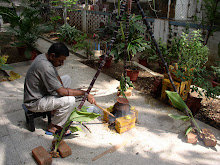MULLEN® DIAPHRAGM TARE VALUE and HEIGHT BRIDGE GAUGE TO VERIFY THIS
Diaphragm performance is vital to consistent and reliable test results, which is why it should be checked and changed regularly. A Mullen® diaphragm height gauge, which allows you to verify distension, will help determine when a diaphragm has exceeded its useful life.
Mullen® Model C tester should be aware that the Rubber Diaphragm has a known Tare value of 3.5 to 5.5 PSI.
This value will be specified on the pack of Diaphragm if they are original Mullen Diaphragms.
- This Tare Value has to be deducted from the recorded sample Burst Value,
- To arrive at the actual sample burst value.
Verification of the Rubber Diaphragm
The Rubber diaphragm over a period of time loses its elasticity and hence the tare value will change.
In order to verify if the diaphragm’s tare value is within range as well as to determine the time when it has to be changed Mullen® Testers sell a diaphragm height Gauge
 Using the Diaphragm Height Gauge to verify the Tare value
Using the Diaphragm Height Gauge to verify the Tare value
All you do is place the height gauge on the diaphragm plate (lower plate – do not place any material in the clamping area) and distend the diaphragm up to the bottom of the height gauge – the gauge should have a reading. Depending on the specification of the diaphragm, it should read between the diaphragm specification (for example #520 diaphragm used in Model C specification is 3.5 to 5.5 PSI). If the gauge reading does not agree with the diaphragm specification, the diaphragm is out of specification and should be replaced

![clip_image002[7] clip_image002[7]](http://lh5.ggpht.com/_RTndIGpllio/SgOBd_JK34I/AAAAAAAAYSE/1DSLO0bzd0I/clip_image002%5B7%5D_thumb%5B8%5D.jpg?imgmax=800)
No comments:
Post a Comment